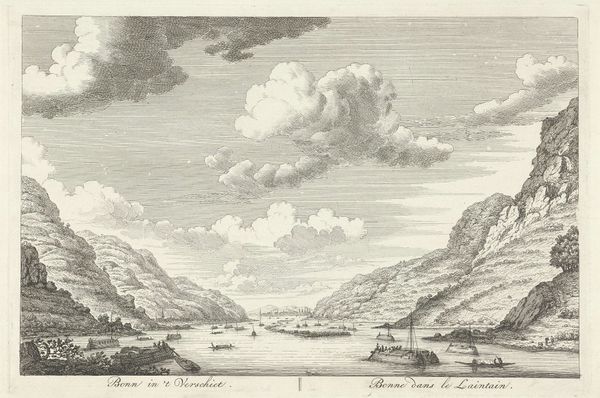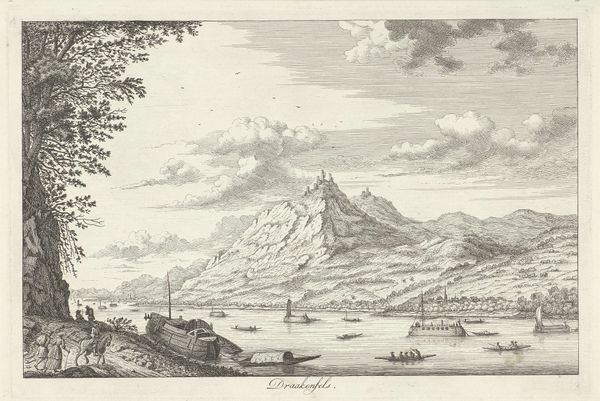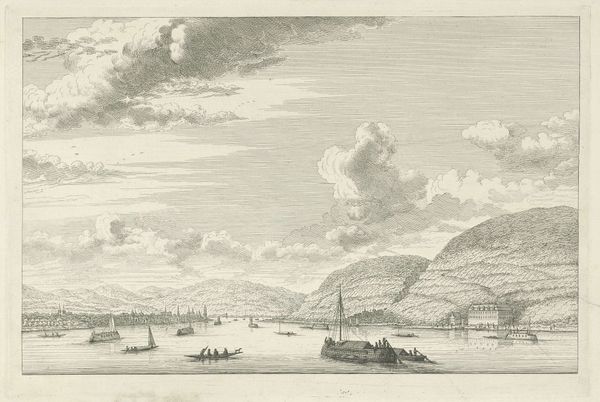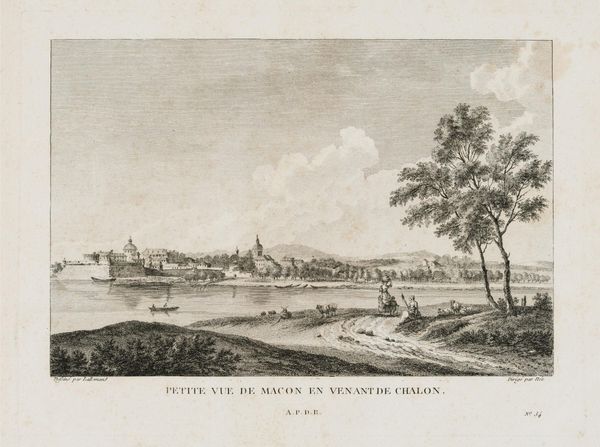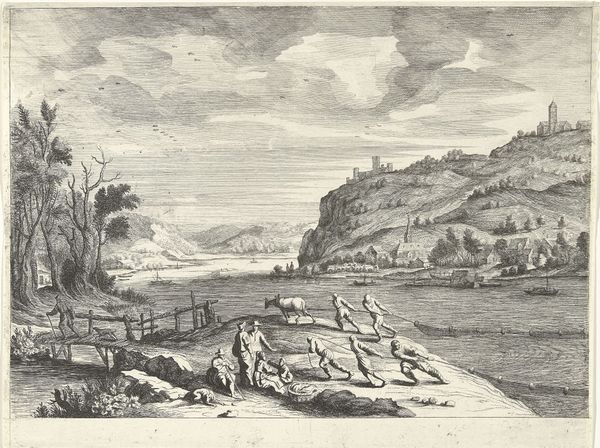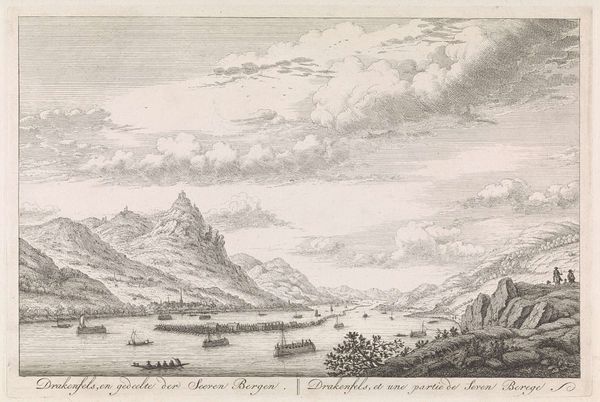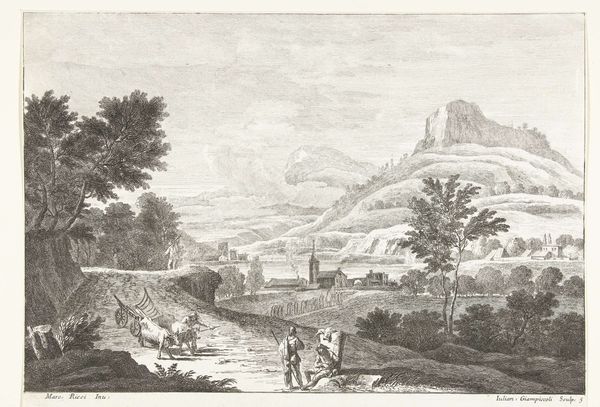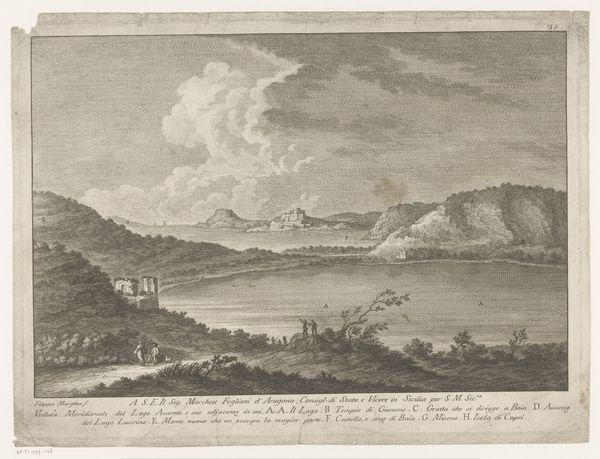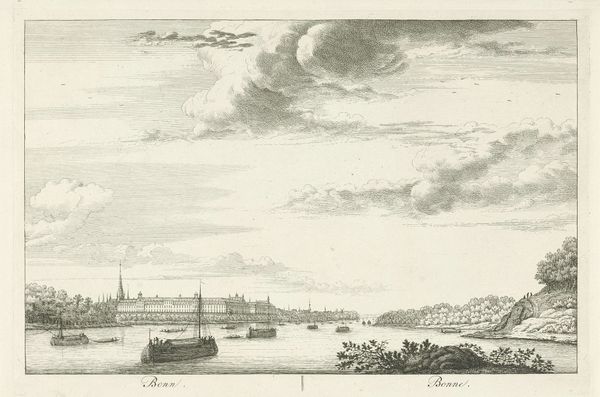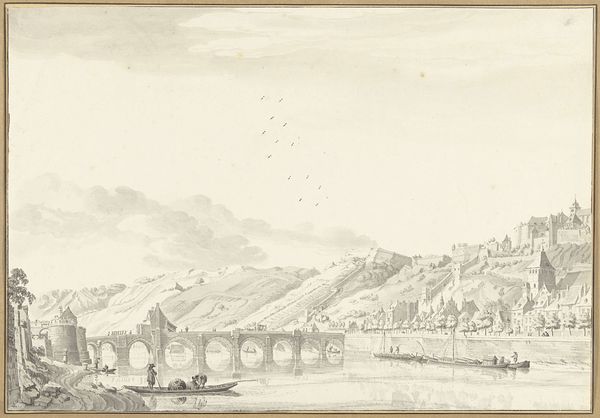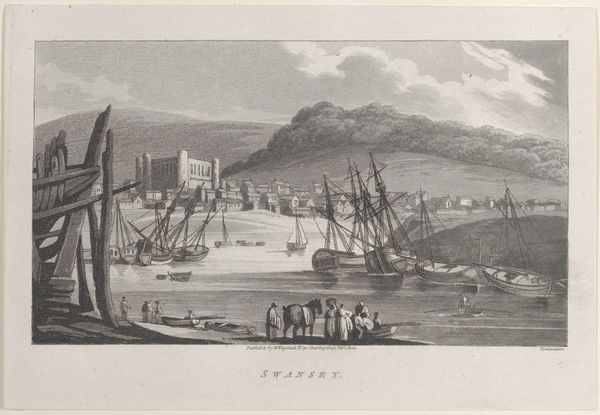
Dimensions: height 230 mm, width 341 mm
Copyright: Rijks Museum: Open Domain
Curator: Welcome. Here we have Hendrik de Leth's 1767 print, "Braubach, gezien vanaf de Rijn," which translates to "Braubach, seen from the Rhine." Editor: The intricate detail, almost like lace! It gives the impression of a tranquil, if somewhat solemn, atmosphere. It really captures the serenity of the river meeting the imposing hills and architecture. Curator: Indeed. De Leth uses etching and engraving to capture the picturesque town of Braubach along the Rhine. What's striking is how the steeple stands out; a potent symbol of civic pride and perhaps, the power of the church at that time. Editor: Absolutely, and let's consider the materials. Prints like these were quite reproducible; allowing this particular view and associated symbolism to circulate among a burgeoning merchant class interested in trade, and who wanted visual affirmation of their holdings and influence. What about that large tree to the left? That’s not just decorative. Curator: You've hit on a vital point. Trees were often utilized to suggest natural beauty but also act as metaphors. A strong tree like this might symbolize resilience, or even longevity of the city itself. Baroque imagery thrives on layering those allegorical connotations. Editor: Precisely. And considering this was made via printmaking, it meant many skilled hands were involved in its creation. It highlights the economic and social structures supporting the dissemination of this particular image. Curator: And in its wider context, Baroque landscape art often served to instill a sense of order and control over nature – the sublime rendered manageable. A statement piece in its own way! Editor: Fascinating how a seemingly placid cityscape, meticulously rendered in ink, reveals so much about both the artistic intentions and the era’s social ambitions. Curator: Ultimately, “Braubach, gezien vanaf de Rijn” provides a window into the intersection of place, power, and perception in 18th-century Europe. Editor: I leave seeing how de Leth’s print demonstrates how commercial art shapes our perception of history and identity. It is a testament to the collaborative and multifaceted processes involved in artmaking.
Comments
No comments
Be the first to comment and join the conversation on the ultimate creative platform.
